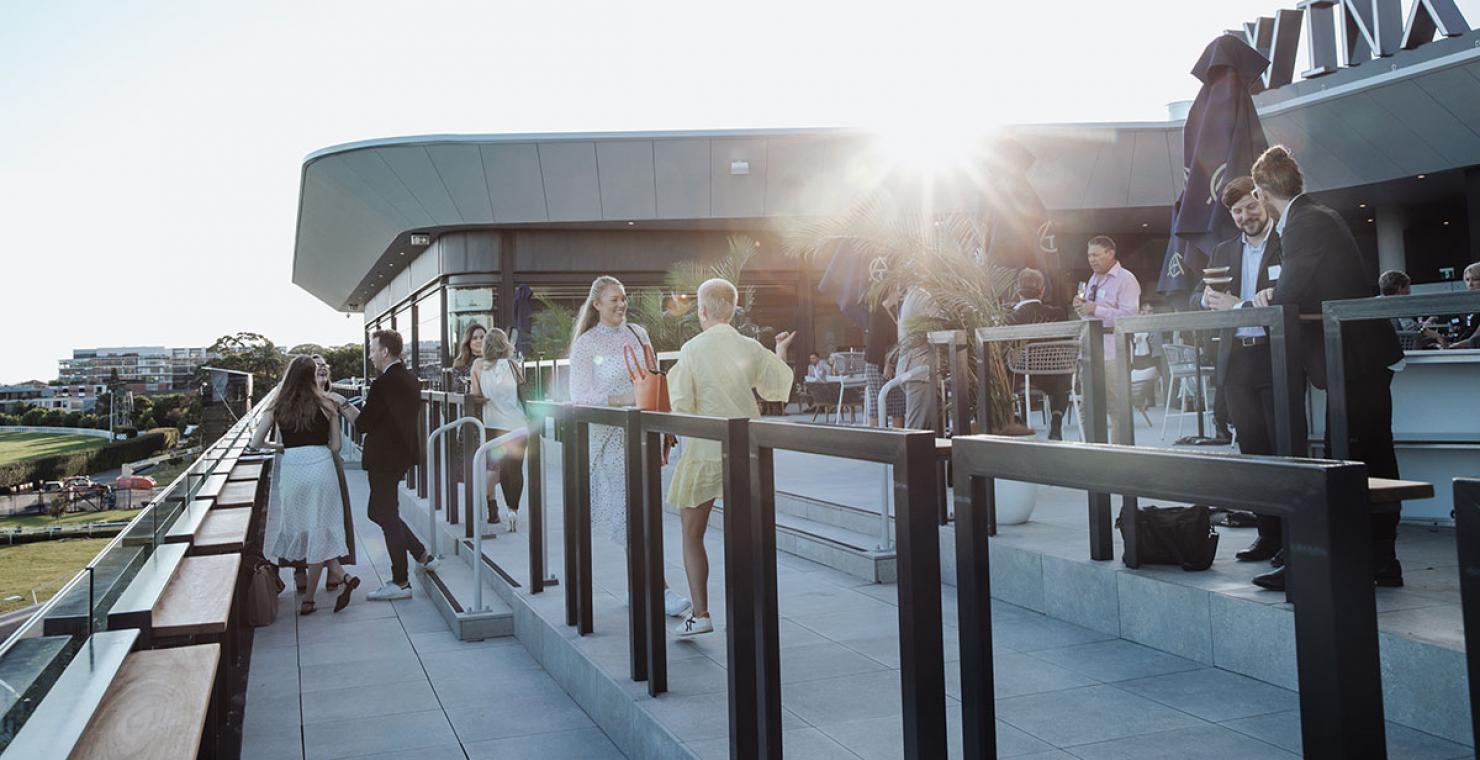
Atmosphere is to experience what experience is to an event
By Peter McDonald
On the weekend let’s just say I had cause to be at Royal Randwick – coincidently a venue of MEA member Australian Turf Club – for a private event. I had a great day.
I got to thinking about what about it makes me conclude it was a ‘great’ day. Sure, the Sydney weather over the weekend was mighty fine, but when you can sit in a pub with a group of people and watch sets of thoroughbreds – I mean these beasts are amazing – racing one another under a cloudless blue sky on the greenest of straights on live tv, something about being there in person must be quite different for it to be a much better choice. For the record, pub gambling is not my typical pastime.
I deduced that whilst it’s the ‘experience’ of the event that amplifies personal value of it to an attendee, ‘atmosphere’ is what magnifies the experience. At one point I looked around, took everything in and physically felt a broad smile come over my face. I felt better because I was there and for what I was exposed to. There was nothing synthetic. It was 100% real life. As my mind typically does, it went on a tangent.
If atmosphere sets tone, evokes emotions, and immerses participants in the experience, how do we nail that for an event?
For mine atmosphere is the memorable and impactful concurrent experience by all body senses.
Let’s start at the beginning – after all it’s a very good place to start.
The first task is to define a clear theme or concept that aligns with the overall goals and objectives of the event. This will guide the creation of the atmosphere.
Next consideration is the visual elements such as colours, signage, decorations, aesthetics to reinforce the theme and desired emotions. Sound and music have a profound impact on the atmosphere. Appropriate soundtracks, ambient sounds – like a trumpet calling everyone trackside for a race – or live performances enhance mood and ambiance.
Scents trigger memories and emotions. Fragrances or aromas – pleasant or not: we are talking horses in my example – aligned with the theme will contribute to a sensory experience.
Maintenance of a comfortable temperature and climate to ensure participants are physically at ease. All I’ll say is whilst the Spring open air was fresh, thank goodness for the ability to escape to the grandstand aircon.
How participants move through the environment and interact with elements plays its part. The arrangement of the physical space or layout to optimise traffic flow and engagement are important, as is the need to ensure complementary furniture, decor, and props choices. The type of seating, tables, and materials used can make a significant difference. And perspective has a role to play here too. For example, from high up in the grandstand, I could look down on the racecourse footprint. This more holistic view allowed me to take things in from an angle that wouldn’t be replicable at ground level. I could see how manicured the track itself was (the lawn perfectionist in me was highly impressed), shade umbrellas, marquees, pathways, tunnels, everything.
Interactive elements that encourage engagement and exploration being incorporated adds a dimension for inquisivity. Tactile touchscreens, interactive displays, hands-on activities and the like can only be accessed through first-person participation in an event. AI and virtual are yet to equally replicate that.
Storytelling techniques weaving a narrative throughout the experience guides participants and deepens emotional connections. Lighting dramatically affects the atmosphere – Vivid Sydney or Las Vegas anyone? Different lighting effects, including spotlights, ambient lighting, strobing or movement, and colour changes create specific moods. Likewise, different textures and materials, such as wood, glass, or fabric, can evoke different feelings.
Surprises or special moments incorporated to catch participants off guard add excitement. Art installations, quotes, symbolic elements, augmented reality (AR), virtual reality (VR), and interactive displays seamlessly integrated can all enhance immersion. Safety and accessibility to all participants similarly so.
But ultimately, it’s the assurance that all elements work together cohesively to create a unified convergence on the senses that is key. As the old saying goes, the value of the whole is worth more than the sum of the parts.
So, it’s my view that atmosphere is a derivative of the overall experience design, and should align with the objectives and emotions intended to be conveyed. In an event sense, it should transport attendees into a different world or mindset and leave a lasting impression. My memories of last Saturday will be fond because all of this happened. Well done ATC.

